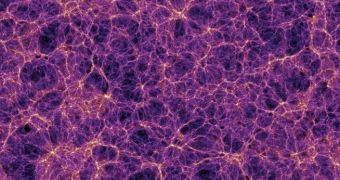In a recent scientific study, a team of investigators took a series of steps towards explaining some of the most peculiar shapes, structures and phenomena found in the Universe, including the existence of the Sloan Great Wall and that of the boundary known as the End of Greatness.
Expert Rien van de Weygaert Kapteyn, who is based at the University of Groningen Astronomical Institute, in the Netherlands, was the leader of the research effort.
He and colleagues investigated some of the largest structures that can be identified in the Universe, and attempted to explain how is it that they grow to such impressive size, where they originate, and how come they don't grow bigger.
The cosmic web in particular was analyzed from the perspective of topology, which is an area of mathematics dealing with the study of shapes. This is important because the web cannot be observed in 3D directly.
Rather, its existence is inferred from redshift analysis of the distant Universe. Galaxies, clusters and superclusters are removed from the images, and all that's left is a map of their interactions (attached).
This is very useful for analyzing the observational scale called the Edge of Greatness, beyond which all superlatives become immaterial. This scale begins at 300 million light-years, which represents the limit at which the large-scale structure of the Universe is homogenized and isotropized.
Reaching this limit is a cosmic structure known as the Sloan Great Wall, which is basically a galactic filament, and the largest organized formation of matter in the Universe.
It contains countless galaxies, and is located about a billion light-years away from Earth. The Wall itself is some 1.37 billion light-years in length, which makes it three times as large as the previous record-holder, the CfA2 Great Wall.
One of the functions this structure serves is to separate one immense void – one of the eyes in the net that is the cosmic web – from the next one. Similar formations fulfill the same task, and their interactions caused the net, spongy-like appearance the web has.
Interestingly, the web appears to show a widening tendency, which means that, as a general rule, galaxies tend to push away from each other. That is not to say however that they all do the same.
Our neighboring galaxy, Andromeda, will slam into the Milky Way in a few billion years. Throughout the Universe, instances such as this one are not at all uncommon.
What astrophysicists are saying is that the general tendency in the Cosmos is for such structures to be pushed further away from each other. Further analysis of the cosmic web may reveal how and why this happens.
Topology might help confirm whether the universal voids originated in slight disturbances of the material that permeated the Cosmos shortly after the Big Bang, Universe Today reports.

 14 DAY TRIAL //
14 DAY TRIAL //